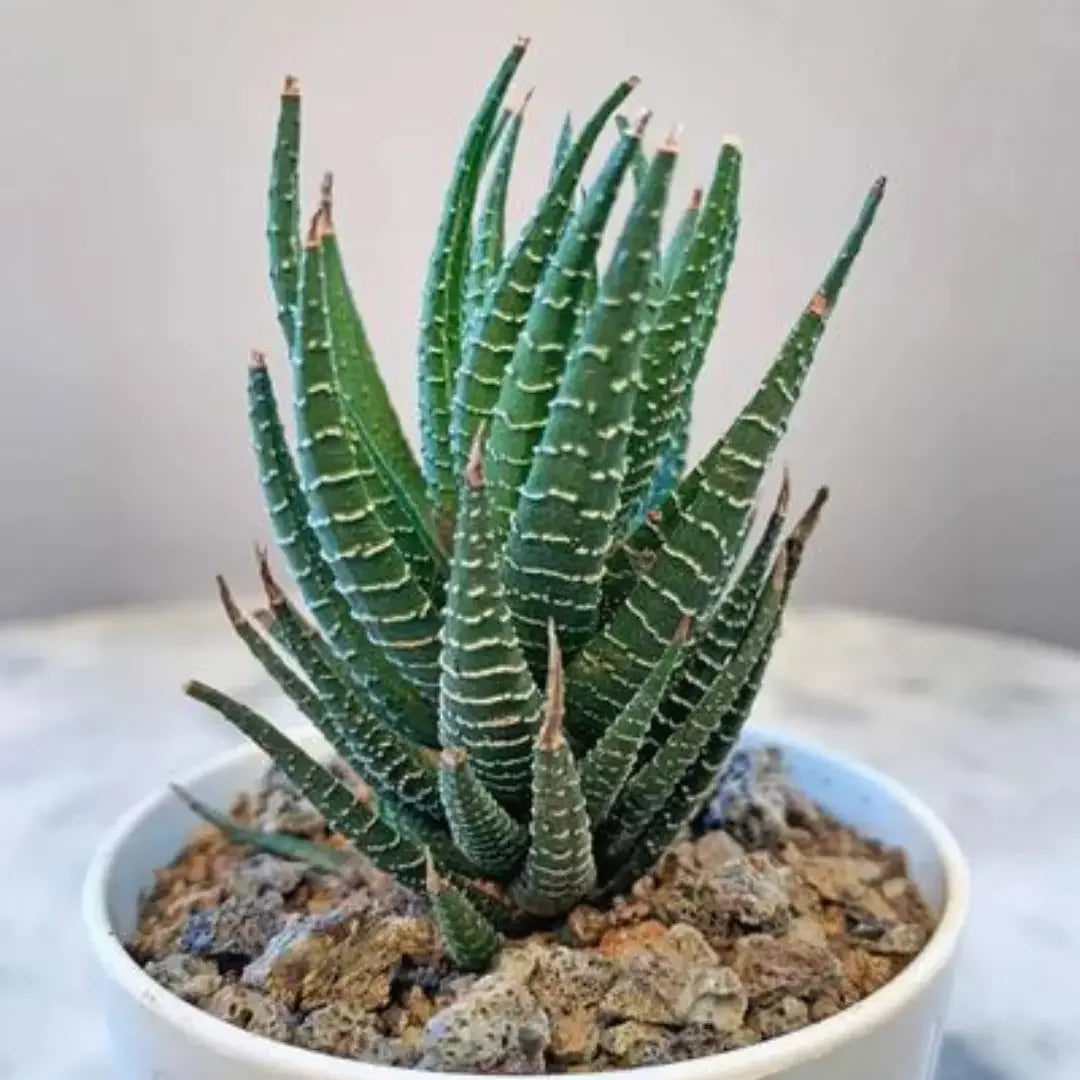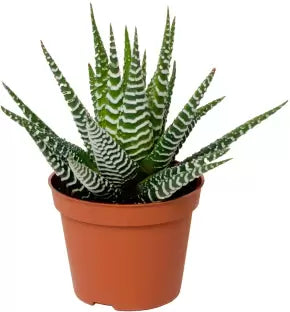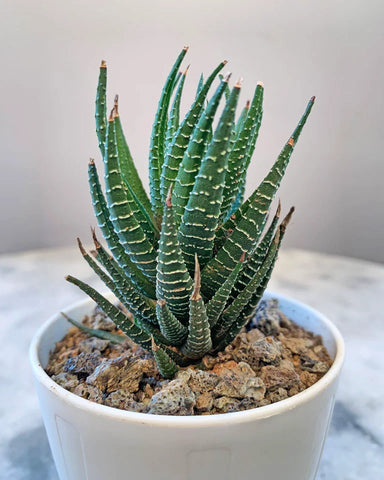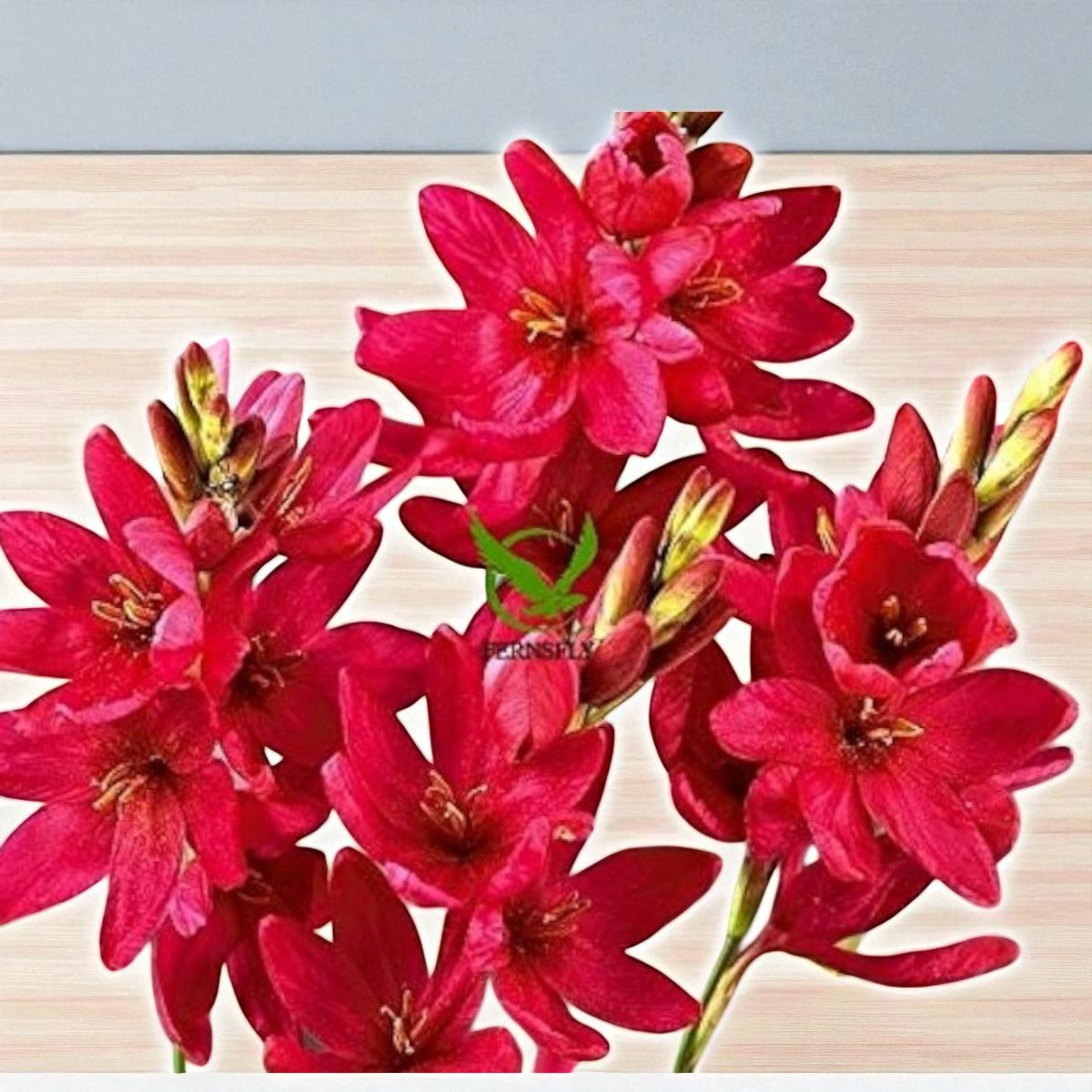
How to grow and care haworthia plant
Haworthia plant : There is a large genus of small succulents, most of them native to South Africa. Although different species may have other common names. These plants are small succulents, which make very attractive little houseplants. Potted plants are often taken outside for the summer months, and in areas with no cold, they are sometimes grown as garden plants. These small, low-growing plants form rosettes of fleshy green leaves, which are generously covered with white, pearly warts or bands, which give them a distinctive appearance. It is usually easy to grow. Like other succulents, these plants appreciate bright light and ample moisture in summer and relatively dry conditions in winter. Outdoors, these plants usually grow best in sheltered rather than full sunlight. Avoid too much water But don't let them dry out too much. These plants are usually purchased as potted specimens. Like many succulents, they are fairly slow-growing plants, and will normally stay less than 6 inches tall. However, some species can grow up to 20 inches long.

- Botanical name: Haworthia
- Common Names: Zebra Cactus
- Plant Type: Succulent Perennial
- Mature Size: Varies by species, typically 3 to 5 inches tall, with some species up to 20 inches
- Sun Exposure: Full sun but partial shade
- Soil Type: Porous cactus or succulent potting mix
- Soil pH: 6.6 to 7.5 (neutral)
- Bloom Time: Summer
- Flower colour: white (not showy)
- Hardness Zone: 11 (USDA)
- Region of Origin: Southern Africa
- Toxicity: Non-toxic
How to take care of Haworthia plant ? (Haworthia care)
The Haworthia plant is not considered a difficult houseplant to grow – if you can keep a pot of aloe alive on a windowsill, chances are, you can do the same with your own plant. Like all succulents, the most dangerous situation is too much water, as they should never be allowed to sit in water under any circumstances.
Plus, these small ornamental plants can be grown in interesting containers such as teacups and even small children's shoes. If you have grown the plant in such a container, make sure the container has adequate drainage. If it doesn't, it may be a good idea to take the plant out of its container and add a layer of gravel to the bottom to reduce the deforming action of the soil above. Lastly, look for sunburns on your plants.
What kind of light does the Haworthia plant like ? (Does haworthia need sunlight?)
Haworthia plant
Haworthia plant , which likes bright light but not direct sunlight. In their native environment, they are often found in the shadow of a rock or other object. They grow best in a room with a window facing east or west that provides bright light for a few hours a day. White or yellow leaves usually indicate too much sun. If the plant is not getting enough light, its green color will fade. If you take your indoor plant outside for the warmer months, avoid too much direct sunlight or it could lead to sunburn.
What kind of soil does Haworthia plant like ? (Haworthia soil mix)
Use a cactus mix or very fast-draining soil. Many growers warn that mixing clay with sand clogs pores so the soil doesn't drain as well, so sand should be avoided. Instead, mix with perlite, aquarium gravel or pumice stone.
How to water Haworthia plant ? (Haworthia watering)
Water evenly and liberally throughout the summer, allowing the soil media to dry out between waterings. In winter, reduce watering to every other month. Never allow water to stagnate in the rosette.
Temperature and Humidity :
The Haworthia plant prefers warm temperatures in summer, but cool in winter (below 50 degrees Fahrenheit). They can get cold sores at 40 degrees Fahrenheit. This plant does not require moisture. It requires good ventilation, especially at night when they take up carbon dioxide for photosynthesis. You can use a fan to circulate the air so your plant can breathe.
Which is the best fertilizer for Haworthia ? (What is the best fertilizer for haworthia?)
Haworthia plant
Fertilize during the summer growing season with a cactus fertilizer. Do not eat food in winter season.
How to Propagating Haworthia Plant ? (Haworthia Propagation)
Haworthia plant , which can be propagated at repotting time using offsets from the mother plant. When taking an offset, use a sharp knife or snipers and cut as close to the mother stem to include as many roots as possible, then allow the offset to dry briefly before replanting (similar to cuttings from other succulents).
Pot the offset in a smaller pot, using the same type of soil used for the mother plant. Place the planted offsets in a warm, bright location, and be sure to water adequately.
For a plant that doesn't form offsets, you can also propagate with leaf cuttings. Take a healthy leaf with some stem tissue attached. Allow the leaf to harden for several days, then plant the lower end of the leaf in a container filled with a well-draining succulent mixture. Give moderate watering whenever the soil mixture becomes dry.
How to Repot a Haworthia Plant ?
Haworthia plant
Haworthia plants are small (usually remaining between 3 and 5 inches in height) and grow relatively slowly. They are often grown in small groups in wide, shallow dishes.
When the clusters transition their container (every four to five years) to a new wide and shallow container with fresh soil in spring or early summer. Even when a larger pot is not needed, these plants can benefit from repotting in the same pot with fresh soil. This is also the time to take the offset for propagation.

Common Pests and Diseases
Haworthia plants are free from most pests, with one exception: mealybugs. These pests can be controlled by simple physical removal or an insecticide spray. If the soil is kept too moist, you may also have a problem with fungus gnats. The only disease for this plant is root rot, which can occur if the plant is over-watered.

